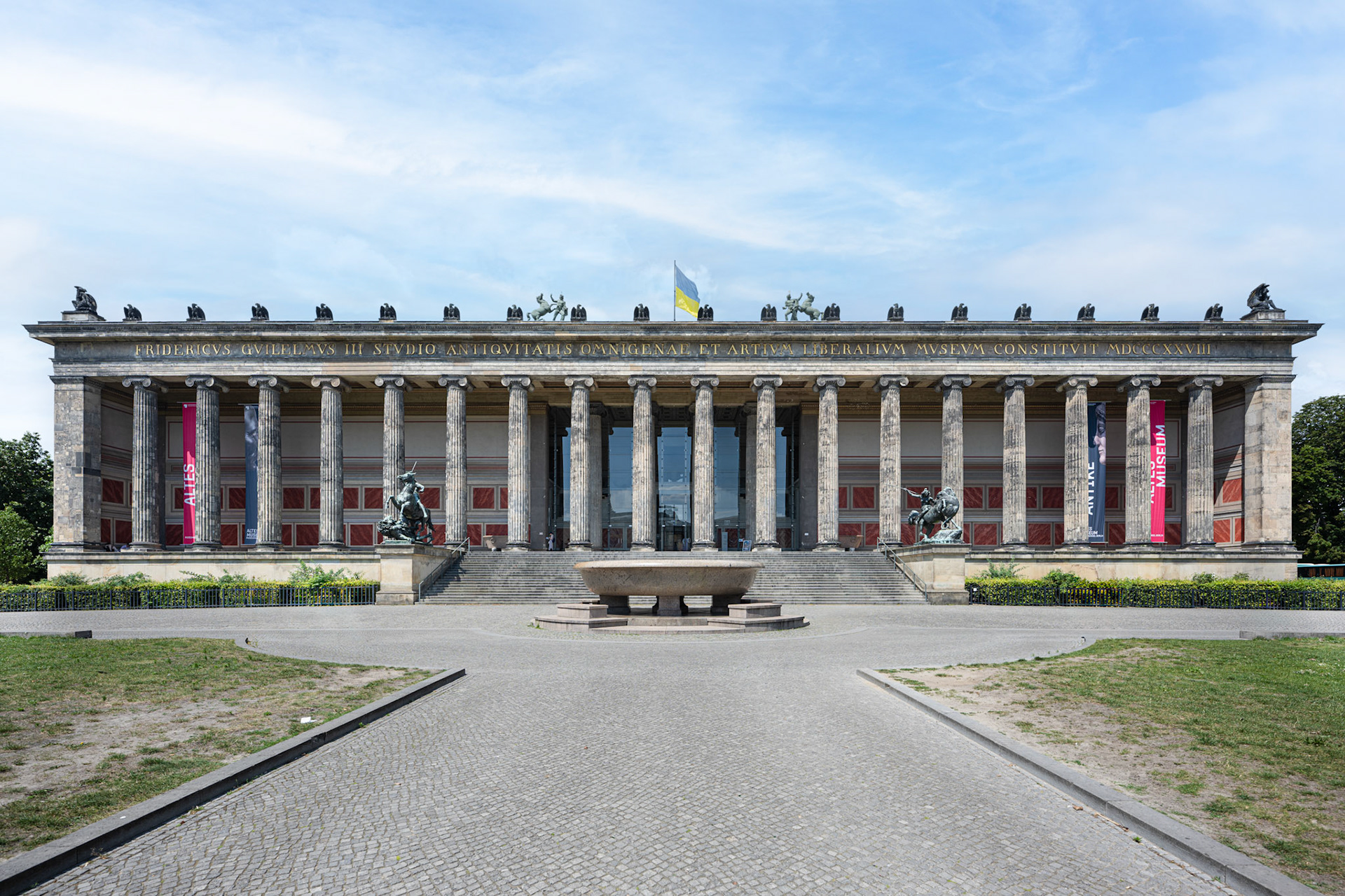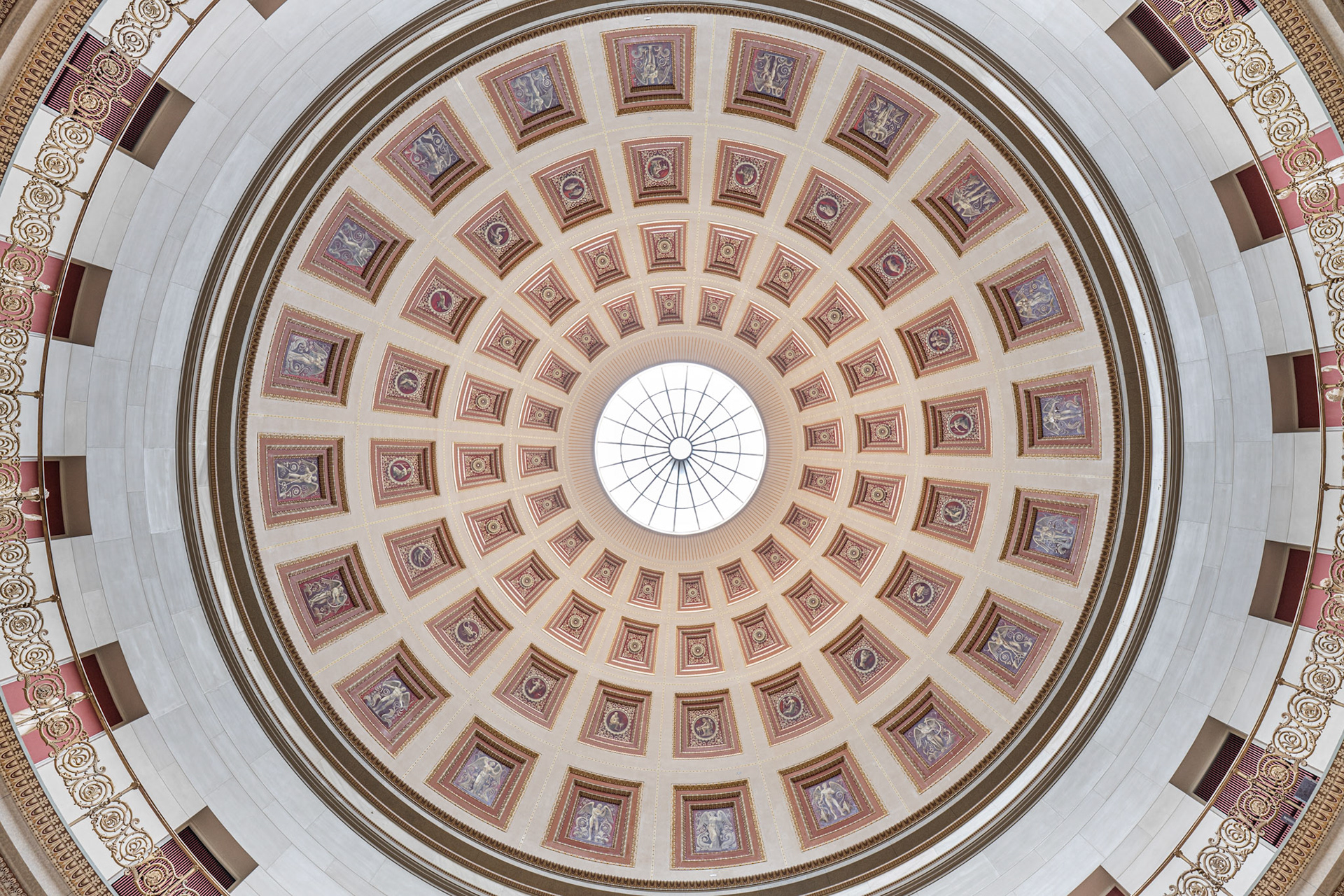The Altes Museum, located on the Museumsinsel in Berlin, was built between 1825 and 1830 to plans by Karl Friedrich Schinkel. The neoclassical building was officially inaugurated on August 3, 1830.
The porch leading to the main entrance is supported by 18 Ionic columns with sculpted eagles above them. The inscription on top of the building is "FRIDERICVS GVILHELMVS III. STVDIO ANTIQVITATIS OMNIGENAE ET ARTIVM LIBERALIVM MVSEVM CONSTITVIT MDCCCXXVIII" (Friedrich Wilhelm III donated this museum for the study of antiquities of all kinds as well as the liberal arts in 1828). The large granite bowl in front of the museum has a diameter of almost 7 meters ans weights 75 tons. Created by Christian Gottlieb Cantian, it is the world's largest bowl created from a single stone. It originally was supposed to be placed inside the museum rotunda, but due to its size, finally had to be placed in front of the museum.

Altes Museum, facade with its 18 Ionic columns
The 23 meters high rotunda is decorated with coffered panels and covered with a skylight. Its design took inspiration from the Pantheon in Rome.

rotunda and skylight
16 Roman copies of Greek statues are on display on the first floor of the rotunda. The gallery on the second floor is supported by 20 Corinthian columns.

Apollo, Fortuna and Jupiter were created in the 4th and 5th century BC

rotunda gallery
You may also like